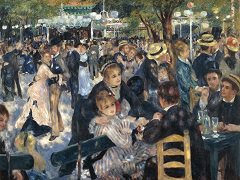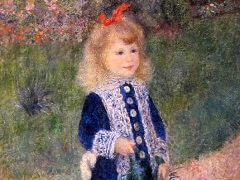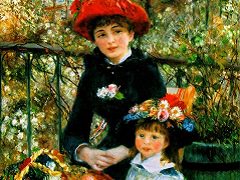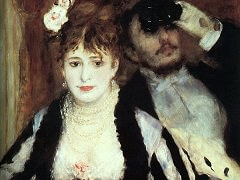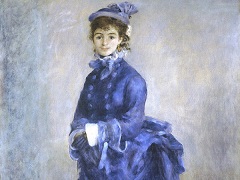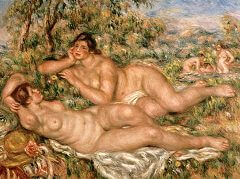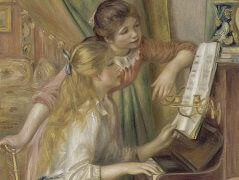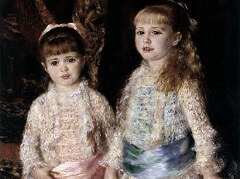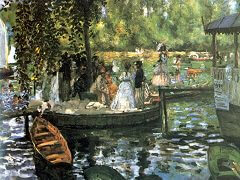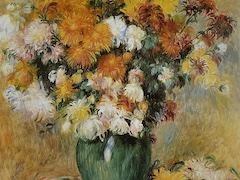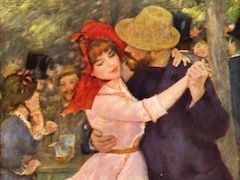Dance in the Country - by Pierre-Auguste Renoir
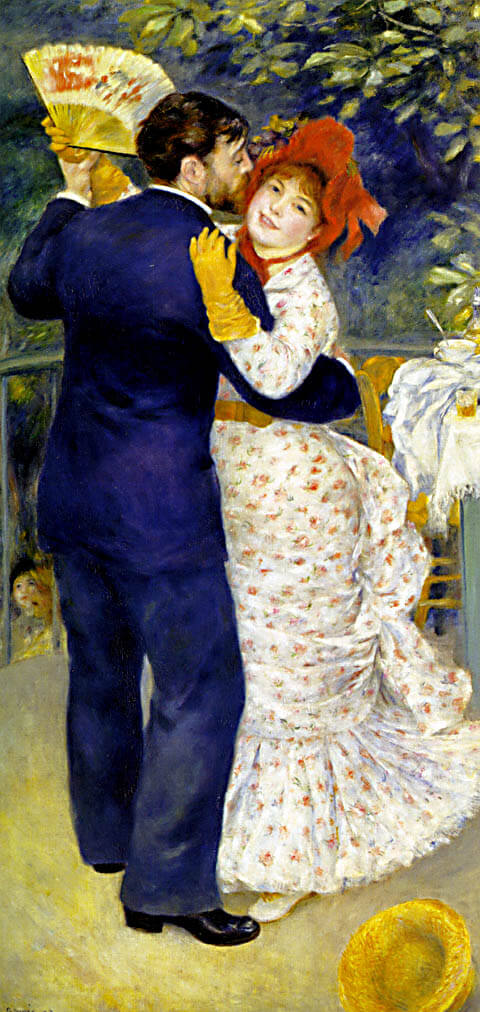
Renoir liked dance scenes. These two paintings were designed as a pair: the format is identical and the almost life-size figures represent two different even opposite aspects of dancing. The elegant restraint of the city dancers and the cool ballroom around them contrasts with the gaiety of the country dance in the open air.
The couple swept away by the music seems to have left a disorderly table, a carelessness accentuated by the hat dropped in the foreground. There are many contrasts between the two panels, even in the colours, cool for Suzanne Valadon's dress in City Dance, warm for Aline Charigot, Renoir's future wife, who lends her laughing features to the country dancer. But apart from their differences, the two couples seem to be linked by the same movement, as if they incarnated a sequence from the same dance.
Exhibited by Durand-Ruel, who owned them for many years, the two paintings mark a change in Renoir's technique in the early 1880s. The drawing is more precise and the simplification of the palette contrasts sharply with the vibrant brushstrokes of his earlier works. Renoir himself admitted that a keener attention to drawing was the result of a need for change he felt after seeing Raphael's paintings and Titian's paintings in Italy.


